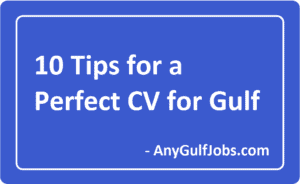How should the perfect cover letter be structured? To ensure that your application documents are completely convincing, you should consider the following tips.
The cover letter in the application is still part of the standard in most companies with the résumé. To get a chance to be invited to a job interview, both your CV and cover letter must be well received by the reader. We’ll tell you how to best structure your cover letter and avoid obvious mistakes.
If you follow these 15 cover letter tips, the chances are good that you will actually be called for an interview.
- It all starts with research
- First impressions count
- Find the right contact person
- make sure all the data is correct
- Have a good structure
- Show the reader that you studied the company
- Pick the right highlights of your career
- Respond to the job posting
- You want to sell yourself, so show that too
- Avoid subjunctive, radiate certainty
- Create a meaningful closing sentence
- salary, starting date
- Don’t forget your signature
- Four eyes see more than just two
- Don’t forget: send a single file!
1: It all starts with research
Before you even think about getting started on a cover letter, you should always do your research: once you’ve found a job posting that suits you, the next step is to visit the company’s website! Even if you know the employer, it is important to find out exactly what he stands for and what sets the company apart.
2: First impressions count
Of course, the content of your cover letter should always be decisive. But the same applies to the application: the eye eats too. Therefore, you should make sure that the design of your documents is appealing, but not too exaggerated.
A uniform layout of the cover letter and résumé not only makes it clear that you have thought about your own presentation, but also that something is actually at stake for you. You made an effort – and your application should also express this optically. Of course, you shouldn’t overdo it with bright colours or graphics: the design should ultimately support the content and show a structure – and not outshine your career.
3: Find the right contact person
Often a contact person, usually the responsible recruiter, is named in job advertisements to whom the application should be directed. In any case, you should name this contact person in the address line and salutation – that is politeness alone.
If no direct contact person is named, you can view this as an opportunity to find out more about the position and the company. A call doesn’t hurt and shows your interest at the same time. You can make a good first impression by asking who to send the application to. Perhaps you will get your contact person on the phone and you can elicit a few details about the position or find out what is important to him when applying? At least there is a chance your name will stick in your head. But be careful: HR and recruiters are always pressed for time! Don’t annoy the person you’re talking to and don’t get too pushy. This can of course damage your application.

4: make sure all the data is correct
So that the reader of your cover letter knows who he is dealing with, you should always include your contact details in the cover letter. Header or footer are very suitable for this, but are not a substitute for addressee and sender!
The cover letter for your application is a formal letter: It is necessary to name the addressee and the sender. Many applicants struggle with the layout here. If you’re having trouble with that too, you can use a template so that everything looks neat and tidy.
5: Have a good structure
” A cover letter should always have a common thread. ” You can read this sentence in many application guides – and of course it is correct! But what is hidden behind this ominous red thread? In principle, it is no different with an application than with any other text that you write: There should be a structure that the reader can use for orientation.
Introduction, main part, conclusion
The application should also adhere to this. In the introduction you explain your interest and show why this position and the company are of interest to you. You arouse the reader’s interest in a creative way and in the best case make them curious. The main part, the heart of your cover letter, goes deeper in content and should emphasize the highlights of your career and bring them to the fore, which is why you are the best possible candidate for the advertised position. But more on that later. The conclusion is the farewell, in which you emphasize your commitment again and of course show that you are looking forward to a personal conversation.
6: Show the reader that you studied the company
If you want to write a successful introduction, it is also about showing that you really care about something – after all, it is your dream job and you want to do everything to get it. Personal relationships with the company are a good way of doing this, of course – but not everyone has them. And no HR manager wants to read today:
“I was happy to read your job advertisement and hereby apply for the advertised position.”
Rather show what makes the company so interesting for you. Why are you applying there? You can find a good start by looking at the employer’s employer branding: Are there guidelines? What does the company value? What makes it attractive? The point is not that you name pure data or facts – or that you start to suckle or brush honey around the reader’s mouth, but that you clarify your interest and also show that your application letter is not a loveless mass letter. Because experienced recruiters see through this immediately and sort you out.
7: Pick the right highlights of your career
Many applicants make the mistake of using the same cover letter over and over again – and fail frequently. Why? Because the skills and stations that are presented in it do not respond to what is required in the job advertisement. If you are writing a really meaningful cover letter, you should first analyze what is in the ad: What qualifications are required and what skills should the applicant have?
Do you meet all points? Excellent! Then list these points and prove them with points from your vita. Are you looking for a good team player? In that case, you should show that you have already worked successfully in the team. What counts is what you can substantiate and underpin directly (preferably with numbers and examples). Everyone says they can work in a team. But only those who can prove it are convinced!
8: Short and to the point, not long and dissolute
In doing so, you shouldn’t wander too much from the topic and get lost in details. In general, the following applies to cover letters: The document should not exceed one A4 page. And if your cover letter is longer, you should shorten it – and don’t start to skimp on the font size or paragraphs. HR managers only have a few minutes per application to view them. If a cover letter is not easy to read, this is annoying and immediately creates a bad impression. Keep it short and get to the point.

9: You want to sell yourself, so show that too
Understatement and false shyness are out of place here. After all, the word application also comes from advertising. You do your own marketing to sell yourself and your workforce. Many applicants, especially in Germany, find it difficult to write positively about themselves. You don’t want to appear bragging.
“The reader will see what I can do.”
Of course, you shouldn’t cut yourself open and appear snooty, but you also want to make an impression. Don’t be too humble, be confident. After all, you want to show that you are the best at doing the job.
10: Avoid subjunctive, radiate certainty
False understatement also includes excessive politeness. Of course you have learned that you shouldn’t take advantage of your counterpart, but certain formulations have no place in the cover letter. This also includes the subjunctive:
“I would appreciate an answer.”
It seems insecure and doesn’t exude the confidence you want to show. So delete the subjunctive for the application from your vocabulary.
11: Create a meaningful closing sentence
The final sentence of your application is about getting the reader to respond. The ultimate goal is to be invited to a personal interview. In sales this is called “call-to-action”, the recruiter should react to your application and ” buy” you. So explain in the final sentence that you are looking forward to getting to know each other personally and that you would like to come by for an interview. If you find it difficult to formulate your own, there are many examples online of classic closing sentences for your application.
12: salary, starting date and co
And don’t forget: If certain information is requested in the advertisement, you should definitely include this in your application. Often people are asked about a desired salary and the possible starting date. Don’t make the mistake of leaving these points out because you may be unsure! Applications that do not contain all the necessary information are often rejected directly because the formalities are incorrect. A good place in the cover letter for salary and starting point of employment is the last paragraph before the adoption.
13: Don’t forget your signature
Sincerely … so what then? Will my name be printed under the cover letter or do I have to sign it?
Very clear: both cover letter and CV should be signed. While it is compulsory for a résumé, it is good form with a cover letter. In addition, it looks even better if there is a personal touch with your signature.

14: Four eyes see more than just two
Before you send off your documents, you should definitely have someone else proofread it again. The biggest no-go when applying are still spelling or grammatical errors. Every HR manager says: If you make mistakes in such an important document as your own application for the dream job, you may not be able to work properly on the job. the application will be sorted out. So be sure to play it safe and let someone else correct your application so that you don’t lose your chances because of a stupid mistake from the start.
15: Don’t forget: send a single file
The application letter is ready, the résumé corrected, the appendix with references gathered: the application can go! If, like most applicants, you send your documents by email, you should send all documents as a single PDF file. In no case individually and especially never as a WORD document. This not only ensures that the recruiter gets everything practically sorted, but also has the security that the graphics and layout will not shift if the company uses a different WORD version than you.
To find Jobs in Middle east kindly Visit Anygulfjobs.com





























